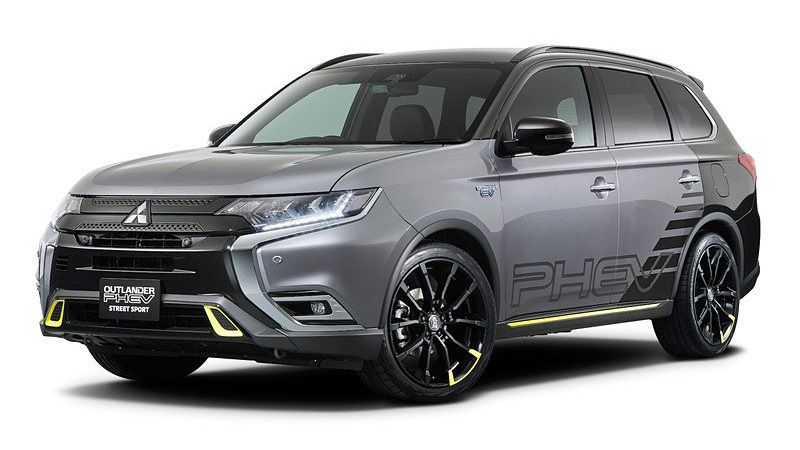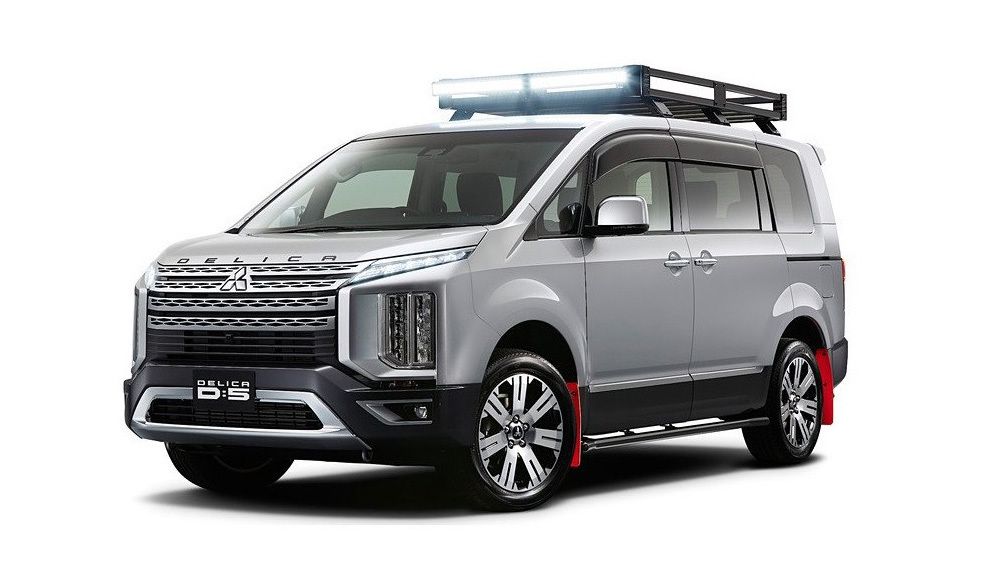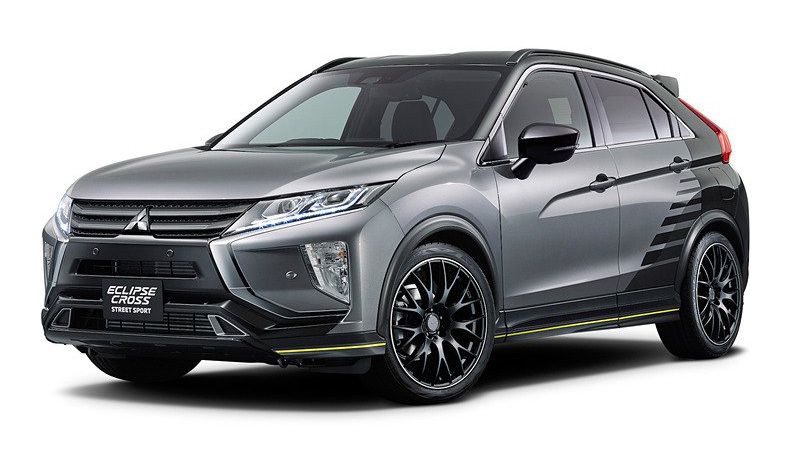The Tokyo Auto Salon is nearing its arrival and Mitsubishi is prepared to tackle the show with not one, not two, but three concepts. The first one is based on the Delica D:5 and offers up a take on what an off-road-oriented model could look like. The other two concepts are based on the Outlander PHEV and Eclipse Cross, and both go by the name “Street Sport.” Information is still rather thin at this point, but here’s what we know so far.
Mitsubishi Delica D:5 Off Road
The Delica D:5 Off-Road Concept is probably the weirdest concept that we’ll see that the 2019 Tokyo Auto Salon. The standard D:5 is already weird enough with is DNA being primarily mixed with that of an SUV and a small conversion van from the 1990s. It does, however, have some of Mitsubishi’s standard DNA in its nose and the oddly shaped, recessed lights that flake the grille on either side.
As for the interior, we have nothing to go by. Mitsubishi has only released one image and has said next to nothing about the concept. We suspect that the interior will probably be carried over from the standard model, but Mitsubishi may surprise us by offering up some more ruggedized gear inside too. That would make sense, but then again, we are looking at an off-road concept with street tires, so who knows what the cabin really offers.
Mitsubishi Outlander PHEV Street Sport
We’ve already seen the latest design of the Mitsubishi Outlander PHEV as it was just updated for the 2019 model year. And, I hate to say it, boys and girls, but this concept is most likely just an aesthetic package that’s good for nothing more than making the Outlander PHEV look faster and more potent than it really is. Highlights include the graphics wrap on the rear that blends together the grey front end with the black rear end and roof. There is some plastic cladding on the front and sides, and the mirrors are finished in a gloss black.
Don’t expect any interior updates or anything in terms of powertrain updates, either. For what it’s worth, the updated Outlander PHEV comes with a new 2.4-liter four-cylinder that runs on the Atkinson combustion cycle and a slightly larger 13.8-kWh battery pack. The hybrid motors hidden under the skin are 10-percent larger than that of the previous model, and all-wheel drive is standard equipment on all PHEV models. There are no definite specs to go by in terms of horsepower and torque, but we do know that the new battery and motor combination should push all-electric range beyond the previous 22-mile mark. The batteries should be able to take a full charge in four to eight hours depending on the socket, and a slight update in power output is expected as well. Either way, however, the “Street Sport” probably won’t make a lot of sense on this concept.
Mitsubishi Eclipse Cross Street Sport
Mitsubishi has taken a lot of heat for using the Eclipse name – even with the “Cross” nomenclature next to it – on a crossover. A lot of people believe that Mitsubishi is ruining a once iconic name in an attempt to build sales of the clout of the name alone. I actually thought that the use of the name on this crossover would eventually grow on me, but it hasn’t. Not one bit if I’m being honest. Be that as it may, Mitsubishi is all in now, and to generate more interest, it has applied the same “Street Sport” styling to its latest crossover. It has the same body graphics as the Outlander PHEV Street Sport, the same blacked out nose, and black mirrors. The Yellow accenting is even more subdued though, and one could argue that it’s actually a nice addition here. We can’t see the back so we can’t say for sure, but it appears as if the only yellow accenting is found on the front bumper flics, the side skirts and around the outer edge of those fairly attractive wheels.
It’s hard not to let the bad generally bad opinion about the name itself cloud our vision of this concept.
The second engine offering is a diesel engine that will offer the same general output and performance, albeit it with a little more torque. Obviously, this engine is gear more toward the global market where diesel is still a lot more commonly used.
Further reading
Read our full review on the 2019 Mitsubishi Outlander PHEV.
Read our full review on the 2018 Mitsubishi Eclipse Cross.



